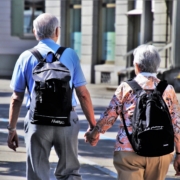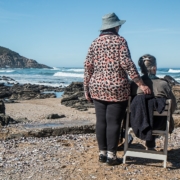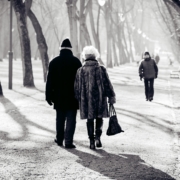Being festive and mindful in the era of COVID-19
This holiday season is going to be different. Few of us would have thought that at some point in our lives we would be celebrating winter holidays during a global pandemic. Yet, in difficult times humans always find ways to adapt, support each other and continue those traditions that define them and form part of their cultural and personal identity. We worked together, learned to live with the pandemic and now we are entering this holiday season which will be very different from what we were used to but will retain its spirit and its importance for us and our loved ones.
It is a time when people come together and share love, joy and hope. But how can you be close to your loved ones when you can’t give them a hug or sit at the same table and share food with them? Luckily humans are resilient and adaptive and if there’s one thing this pandemic taught us, it is how to be close to the ones we love while staying physically separated in order to protect them. Once again, it has been shown that social cohesion can overcome physical distancing as love and care can reach out across vast distances.
We had time to prepare and we also live in an era where there are many tools that allow us to communicate easily and intuitively while staying safe. Video chat services have become an increasingly large part of our social life and even people with limited technological familiarity can easily use them with just a little help. We can join our loved ones remotely in decorating the house and make sure our favorite ornament gets the best spot, on top of the fireplace just like every year. We can be content that our family won’t miss on that special holiday dish they’ve been waiting for by taking them through all the intricacies of our secret recipe. More importantly we can see the smiles of our loved ones when they open their presents!
Technology is not the only way to connect though. This holiday season is a good time to revisit favorite traditions like creating hand-made holiday cards and writing letter to loved ones. We can embark on festive projects like knitting Christmas sweaters or crafting hand-made tree ornaments for the whole family. We can make sure we cook enough cookies for everyone and have them delivered in a safe way. We can exchange our favorite books or even run a holiday-themed book club where we can combine a traditional activity with the use of technology to get together and discuss the books we’ve read.
As with all things, in this special holiday season it is important to ensure that we find our own ways to adapt and celebrate. After all, what matters is experiencing the spirit of the holidays and sharing joy and happiness with our loved ones. With so many options for adapting our holiday activities while staying safe, it is important to go with those that are meaningful to us and resonate with our personality, our lifestyle and the ways we connect with our loved ones.

What can I do?
- As an older adult: Accept that these holidays will be different and communicate with your loved ones. Don’t be afraid to ask for help and support from your family whether it is a video-call to hear your grandchildren singing Christmas carols or a no-contact delivery of your favorite food. More importantly don’t miss out on the joy of giving and caring for your family whether by making sure everyone gets your holiday cookies or by calling your grandchildren to tell them their favorite festive stories.
- As a relative: Acknowledge the limitations imposed by COVID-19 but also be creative and think outside the box. While you may not be able to do all your favorite holiday activities, you can ensure that you and your loved ones experience the spirit of the holidays and the full range of emotions and human contact that comes with it. Communicate with your family to find new ways to share the holiday spirit in a manner that is meaningful and resonates with everyone involved.
- As an assisted living / nursing home owner: Ask your residents what helps them enjoy the holidays while staying safe. Expect different residents to have different preferences. Reach out to the wider community; maybe that choir that visited your facility every year to sing Christmas carols would like to perform online and still bring the joy of music to your residents. Facilitate contact and communication between residents and their loved ones by setting up virtual meetings and ensuring that residents can receive gifts safely. Promote activities inside your facility that allow for safe interaction between residents such as working together to create a book of festive stories or recipes.





